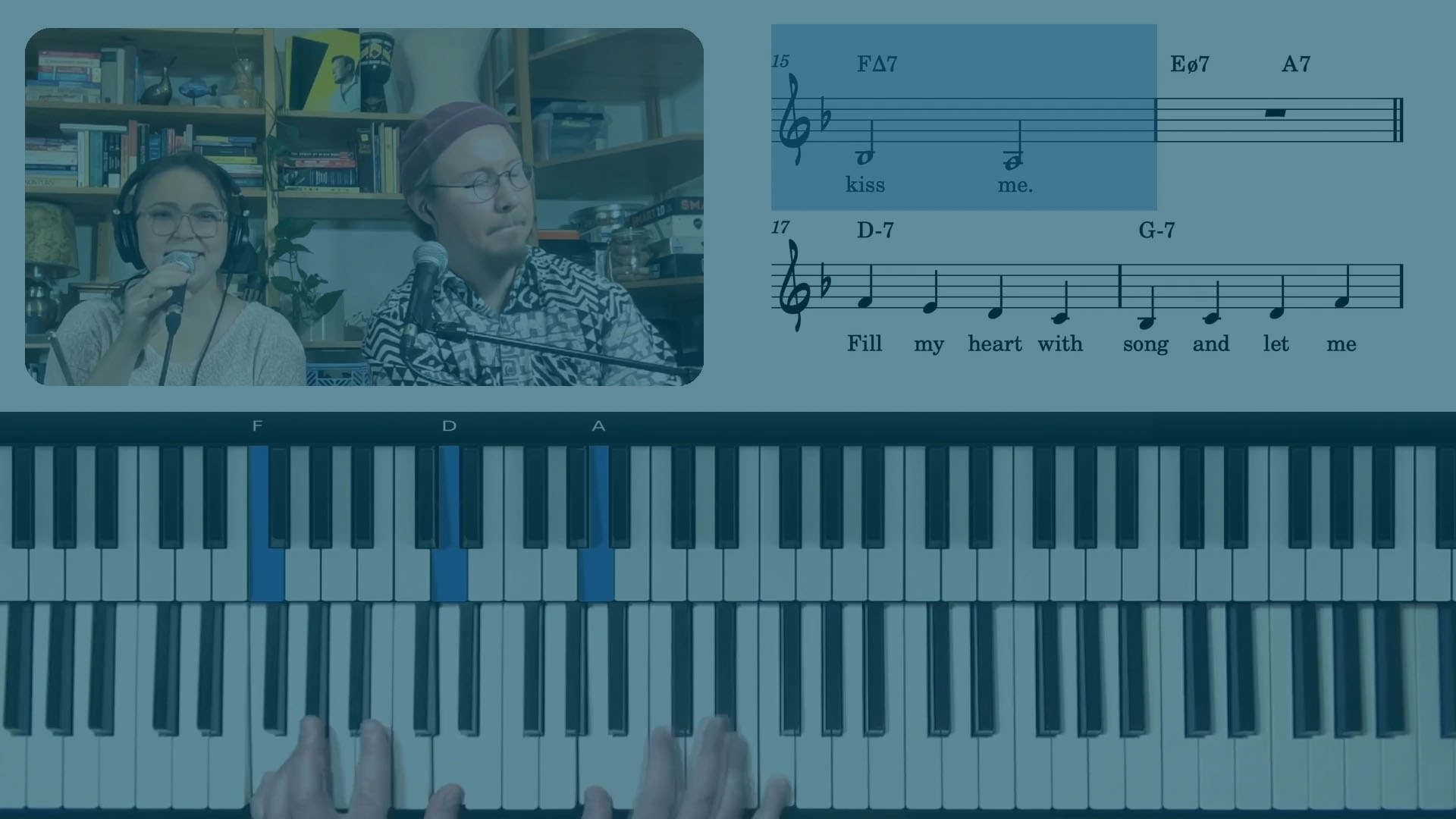Course Lessons
1. Course Introduction
- 1. 1Jazz Singer Accompaniment20:35
2. Essential Voicings & Comping Patterns
- 2. 1Voicing Techniques For Vocals21:29
- 2. 2Comping Under Vocalists19:51
3. Connecting With Vocalists
- 3. 1Substituting Chords with Vocalists33:11
- 3. 2Intros, Outros, & Endings22:50
4. Performance Flow & Dynamics
- 4. 1Rubato Vocal Accompaniment23:47
Course Info
Piano & Voice: Jazz Duo Essentials is a step-by-step guide to mastering vocal accompaniment in a jazz context.
Through six lessons, pianist Tuomo Uusitalo and vocalist Thilia Tamminen explore the art of duo performance, covering comping techniques, stylistic interpretation, intros, outros, rubato, and more.
Featuring in-depth discussions and live performances of standards like “Misty,” “Autumn Leaves,” and “Bewitched, Bothered & Bewildered,” this course offers practical insights for pianists and vocalists alike who want to develop confidence, communication, and creativity in a jazz duo setting.
This course covers the following iconic jazz standards:
- Fly Me To The Moon
- There Will Never Be Another You
- In A Sentimental Mood
- Autumn Leaves
- Misty
- Bewitched, Bothered & Bewildered
In this course you’ll learn to:
- Play simple yet effective voicings that support the melody.
- Avoid clashing with vocal phrasing and lyrics.
- Master intros, outros, and transitions that flow naturally.
- Use rubato and in-tempo playing to match the feel of the performance.
- Incorporate walking bass, pedal points, and chord substitutions tastefully.
Each lesson includes live performance examples, analysis, and practical demonstrations and insights with a professional vocalist.
Lesson 1 – Introduction to Vocal Accompaniment
We begin by outlining the unique responsibilities of a pianist in a duo setting. You’ll learn the importance of listening, dynamics, and simplicity when supporting a vocalist. We discuss foundational strategies to stay out of the way while still providing harmonic and rhythmic support.
Lesson 2 – Chord Voicings for Vocal Support
This lesson focuses on 3-note spread voicings, an essential tool for vocal accompaniment. You’ll learn how to construct these voicings using the root, 3rd, and 7th of each chord, and how to voice them across both hands for balance and clarity. We then introduce extended chord voicings and drop-2 voicings.
Lesson 3 – Comping Patterns For Vocal Accompaniment
We explore how to interact rhythmically with a vocalist with 2 essential comping patterns. You’ll learn how to recognise when to play and when to pull back, helping create a dynamic and expressive performance.
Lesson 4 – Chord Substitution & Reharmonisation
This lesson focuses on harmonic variations including tritone substitutions, pedal points, chord inversions, and advanced reharmonisation techniques. These tools allow you to enhance the musical conversation with your vocalist, and shape the storytelling power of a vocal duo performance.
Lesson 5 – Intros, Outros & Endings For Vocals
This lesson dives into performance structure, including how to set up intros, navigate endings, and incorporate song verses effectively. We demonstrate how these elements can add dramatic shape and polish to a vocal performance.
Lesson 6 – Rubato vs. In Tempo Vocal Accompaniment
In this lesson, we bring everything together with two full arrangements. First, we explore rubato playing with “Misty”, focusing on lyric-driven phrasing and simple voicings. Then we shift to a medium swing version of “Autumn Leaves”, emphasizing rhythmic clarity and supportive playing at a faster tempo.
We wrap up the course with a final performance of “Bewitched, Bothered and Bewildered”, applying all concepts from the course. This includes using the verse, dynamic interaction, and thoughtful voicing choices. The final discussion offers insights into communication, spontaneity, and building confidence as an accompanist.
By the end of the course, you’ll be able to:
- Accompany vocalists across a variety of jazz standards.
- Apply real-world techniques when working with singers.
- Enhance your harmonic and rhythmic awareness in a vocal accompaniment context.
No matter your current level, this course will deepen your understanding of piano-vocal interaction, helping you to accompany vocalists with sensitivity and confidence, making you a reliable and expressive partner in any duo setting.




